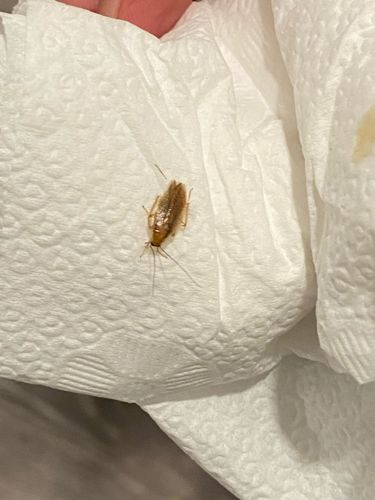German Cockroach
Scientific Name: Blattella germanica
Order & Family: Blattodea, Ectobiidae (formerly Blattellidae)
Size: 1.1 to 1.6 cm (0.43 to 0.63 inches)

Natural Habitat
Primarily indoor environments, preferring warm, humid places close to food and water sources such as kitchens, bathrooms, and food preparation areas. They often hide in cracks and crevices during the day.
Diet & Feeding
Omnivorous scavengers. They eat a wide variety of human foods, including starches, sweets, greasy foods, and meat products. They can also feed on non-food items like soap, glue, and toothpaste when food is scarce.
Behavior Patterns
Nocturnal, active at night foraging for food and water. They are fast runners and reproduce rapidly. Females carry an ootheca (egg case) containing multiple eggs until shortly before hatching. They are highly adaptable and can quickly establish large populations.
Risks & Benefits
Potential risks include spreading pathogens (bacteria, viruses, fungi, parasitic worms) that can cause food poisoning, dysentery, allergies, and asthma. They can contaminate food and surfaces with their feces and shed skins. There are no known benefits to humans or the ecosystem in their typical indoor pest role.
Identified on: 9/18/2025